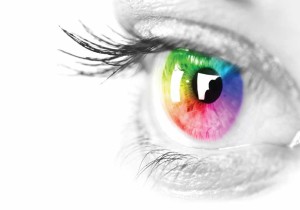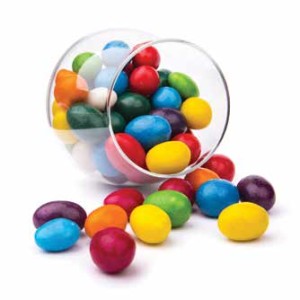The Significance of Colors in Our Lives
by Allen Weiss, MD, MBA, FACP, FACR
President and CEO, NCH Healthcare System
Color affects our mood, our physical and mental well-being and has an impact on the choices we make. Different colors have different meanings, and we have different reactions to the same color depending on our gender and background In creating a healing environment such as a hospital, blues and greens typically have a calming effect. Reds and yellows might cause some excitement. They also might invigorate people suffering from depression.
But all the colors of the rainbow can have different meanings, and we all have some favorites and less favorite colors.
The psychology of color is based on the mental and emotional effects color have on us. This is not completely scientific and there are significant variations among individuals. Nonetheless, there are some interesting generalities worth considering.
For instance, different colors can become associated with specific events. President Abraham Lincoln was wearing an all black Brooks Brothers suit the night he was shot. Afterwards, Brooks Brothers never made another all black suit. You may associate a particular color with a significant event in your own life.
 Psychologist Carl Jung believed the colors you chose reflected a deeper part of your psyche. Introverts prefer blue and extroverts red.
Psychologist Carl Jung believed the colors you chose reflected a deeper part of your psyche. Introverts prefer blue and extroverts red.
The colors you wear each day might signal your motivation or how you are feeling that day. A trial attorney in a red tie might indicate an adversarial day. A blue tie might signal conciliation.
Colors also are used symbolically and have been associated with specific behaviors and holidays. Our red-yellow-green traffic light has been adopted to color-code progress reports in business. Other examples: red and green for the winter holidays, orange for Halloween and seasonal colors matching foods which are harvested during specific times of the year.
Two major categories of color are “warm” and “cool.” Warms such as red, yellow and orange can cause a variety of emotions ranging from anger and hostility to comfort and warmth. Yellow and orange seem to stimulate the appetite, which is worth noting if you have a weight control problem. Cool colors such as green, blue, and purple are associated with calmness or sadness. To help you sleep, the calmness of blue is good for bedrooms.
Marketers and advertising folks make extensive use of color and have performed a great deal of research into symbolism and selection. McDonald’s golden arches are yellow for a reason. Coca-Cola red also gets your attention and makes you thirsty.
 WHAT DOES YOUR FAVORITE COLOR MEAN TO YOU?
WHAT DOES YOUR FAVORITE COLOR MEAN TO YOU?
RED. This is everyone’s second favorite color. Red is intense, attention grabbing—think of the girl with the red dress on, and the color of love, passion, seduction, and desire. Red also defines power, heat, anger, violence, and aggression. Red stimulates appetite, raises blood pressure, and generally makes people react faster. Brides wear red in India, China, and Nepal, where it is believed to bring good luck.
BLUE. The most calming color as it stands for tranquility and allegedly stimulates the calming chemicals in the body. Both sexes like blue, and it is the most favorite color in the world. Blue creates a feeling of trust and loyalty and is used in logos across the world including Mayo Clinic and NCH. Blue is the best color to wear for an interview. Blue can also be associated with depression, as in “feeling blue.” Blue in ancient Egypt and Greece today is thought to ward off evil.
GREEN. Green defines nature and is associated with freshness, fertility and growth. Green is a healing color and with other “natural” colors, such as brown and tan, is used extensively in healthcare environments. It is the color of healthy relationships and creates harmony in the body and soul. Green decreases fatigue, depression, and anxiety. “Green with envy,” captures the greed, jealousy and revenge aspect of this color. Green is the national color of Ireland.
YELLOW. This is the happiest color and symbolizes optimism, mental clarity, cheerfulness, and energy. It is an appetite stimulant and good for restaurants. Vincent van Gogh’s favorite color was yellow. Yellow also means caution and cowardice.
ORANGE. Citrus, other fruits and vegetables, as well as fun, good health, adventures and high spirits are all associations for orange. There is no word in the English language that rhymes with orange and this is the only color named after a fruit.
PURPLE. A color with rich dark hues and a symbol of luxury and nobility. Hues of purple are associated with futurism, spirituality, and psychic energy. Purple stands for magic, mystery, creativity and emotional balance. Purple is suggested for meditation, deep sleep, and calming. The Royals in England embrace purple as the royal color.
PINK. The favorite of little girls who, as the tale is told, in the stone ages had the job of picking fruits with a reddish tones and therefore became sensitive to pink. Nurturing, tenderness, generous, pure, inspiring and giving affection are all associated with pink. Pink has healing properties for those going through emotional trauma.
WHITE. A neutral color noted for soothing. White portrays a sense of being complete since it is a combination of all colors. It represents openness, truth, kindness, healing, and positivity. White rooms project a feeling of simplicity and pureness. The universal symbol for peace is a white dove.
BLACK. The most beloved color by the fashion industry. Any new fashion color trend is typically labeled the “new black.” It defines mystery, seduction, high status (think black credit cards), authority, and competence (black belt). But a black cat crossing your path is bad luck, and black is also the color of mourning.
BROWN. It creates a warm atmosphere which is why it is used with earth colors for health care. Being in sync with the environment and nature gives a sense of security, neatness, and order. This color also stimulates appetite and gives reassurance.
GRAY. So many “shades of gray” is the expression used to denote ambiguity. This color is neither black nor white and is associated with modesty, intelligence, dignity, class, elegance and compromise. Gray helps other colors bask in its limelight. Dark gray can be depressing while light gray makes you feel lighter.
Again, this is by no means pure science, but it is fun to pick out our own palette.
We are surrounded by a rainbow of colors throughout our lives, and we do respond to our environment and so we might as well enjoy the fun and speculation about what each hue means.


Leave a Reply
Want to join the discussion?Feel free to contribute!